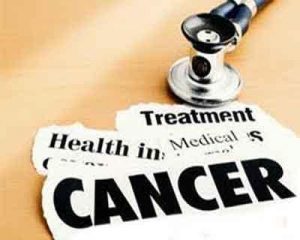- Home
- Editorial
- News
- Practice Guidelines
- Anesthesiology Guidelines
- Cancer Guidelines
- Cardiac Sciences Guidelines
- Critical Care Guidelines
- Dentistry Guidelines
- Dermatology Guidelines
- Diabetes and Endo Guidelines
- Diagnostics Guidelines
- ENT Guidelines
- Featured Practice Guidelines
- Gastroenterology Guidelines
- Geriatrics Guidelines
- Medicine Guidelines
- Nephrology Guidelines
- Neurosciences Guidelines
- Obs and Gynae Guidelines
- Ophthalmology Guidelines
- Orthopaedics Guidelines
- Paediatrics Guidelines
- Psychiatry Guidelines
- Pulmonology Guidelines
- Radiology Guidelines
- Surgery Guidelines
- Urology Guidelines
Medical imaging with low-dose ionizing radiation also associated with cancer risks: JAMA

Medical imaging with low-dose ionizing radiation is also associated with cancer risks, revealed a study recently published in the Journal of American Medical Association.
The dose of ionizing radiation in medical imaging is a very important parameter which may pose hazardous health and environmental implications if not regulated. While low dose ionizing radiation has less propensity to cause damage and has greater medical advantage, its widespread use overshadows all of its benefits.
To ascertain the risks associated with the exposure to diagnostic low-dose ionizing radiation in youths scientists from the Dr. Jae-Young Hong, PhD, and colleagues from Korea University conducted a nationwide study covering more than 12 million South Korean youths. The findings of the study showed a greater overall cancer incidence among individuals exposed to diagnostic low-dose ionizing radiation than among nonexposed individuals after adjusting for age and sex (incidence rate ratio, 1.64). Moreover, the results of the study showed that the incidence of cancer increased significantly for many types of cancers after radiation exposure, particularly mouth and pharynx, breast, thyroid, lymphoid and hematopoietic, and myelodysplasia cancers.
This population-based cohort study included youths aged 0 to 19 years at baseline from South Korean National Health Insurance System claim records from January 1, 2006, to December 31, 2015. Exposure to diagnostic low-dose ionizing radiation was classified as any that occurred on or after the entry date, when the participant was aged 0 to 19 years, on or before the exit date, and at least 2 years before any cancer diagnosis. Cancer diagnoses were based on the International Statistical Classification of Diseases and Related Health Problems, Tenth Revision codes. Data were analyzed from March 2018 to September 2018. The primary analysis assessed the incidence rate ratios (IRRs) for exposed vs nonexposed individuals using the number of person-years as an offset.
Key findings
- Among individuals who had been exposed, 1444 individuals (0.1%) received a cancer diagnosis.
- The overall cancer incidence was greater among exposed individuals than among nonexposed individuals after adjusting for age and sex.
- Among individuals who had undergone computed tomography (CT) scans, in particular, the overall cancer incidence was greater among exposed individuals than among nonexposed individuals after adjusting for age and sex.
- The incidence of cancer increased significantly for many types of lymphoid, hematopoietic, and solid cancers after exposure to diagnostic low-dose ionizing radiation.
- Among lymphoid and hematopoietic cancers, the incidence of cancer increased the most for other myeloid leukemia and myelodysplasia.
- Among solid cancers, the incidence of cancer increased the most for breast and thyroid cancers.
Based on their findings the authors concluded that the association of increased cancer risk with exposure to diagnostic low-dose ionizing radiation may be important to inform decisions about diagnostic use of low-dose ionizing radiation in Asian youth populations worldwide.
For reference, follow the link

Disclaimer: This site is primarily intended for healthcare professionals. Any content/information on this website does not replace the advice of medical and/or health professionals and should not be construed as medical/diagnostic advice/endorsement or prescription. Use of this site is subject to our terms of use, privacy policy, advertisement policy. © 2020 Minerva Medical Treatment Pvt Ltd